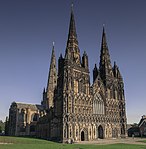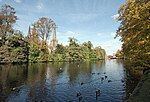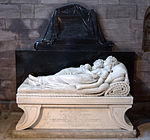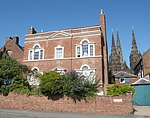Lichfield Theological College
1857 establishments in EnglandAnglican seminaries and theological collegesEducation in LichfieldEducational institutions disestablished in 1972Educational institutions established in 1857 ... and 3 more
Former theological colleges in EnglandIncomplete lists from October 2016Religion in Staffordshire
Lichfield Theological College was founded in 1857 to train Anglican clergy to serve in the Church of England. It was located on the south side of the Cathedral Close in Lichfield, Staffordshire and closed in 1972.
Excerpt from the Wikipedia article Lichfield Theological College (License: CC BY-SA 3.0, Authors).Lichfield Theological College
The Close, Lichfield Dimbles
Geographical coordinates (GPS) Address Nearby Places Show on map
Geographical coordinates (GPS)
| Latitude | Longitude |
|---|---|
| N 52.685 ° | E -1.831 ° |
Address
The Close 22b
WS13 7LG Lichfield, Dimbles
England, United Kingdom
Open on Google Maps










